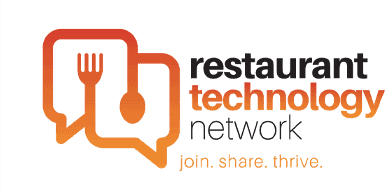The food service industry was already working through some major technological changes when the pandemic hit.
The advent of COVID-19, and the closings and disruptions it’s caused, has done nothing to alter this technological course. In fact, it’s hastened the adoption of a number of tech solutions—contactless payment, online ordering—that might otherwise have taken years to become mainstream.
The sports concession branch of the industry has been no exception to this explosion of change, with a number of techs (and not-so-tech) foodservice options working their way to the forefront both before and after the evolving COVID experience.
Here are some of the ways you can expect sports concessions to become more convenient, more diverse, and safer in the very near future.
Mobile ordering
According to Oracle Hospitality and Turnkey Intelligence, if wait times at concession stands were halved, sports fans in America would spend at least $20 more each on food and beverages. That’s a 43% increase in the average food and beverage expenditure per game.
With that kind of money on the line, it’s no wonder that cutting the wait time and encouraging hungry fans to keep spending those concession dollars throughout the game has become a top priority. Hence, the growth of in-seat, online ordering.
In 2016, less than 10% of US sports fans reported having used in-seat ordering. More than 60%, however, said that they probably or definitely would use it if given the opportunity.
Because of these numbers, companies like OneDine have developed a range of solutions to help feed fans’ appetites and increase their likelihood of ordering more without forcing them to miss that big play.
OneDine’s solutions make event venue concession operations more efficient and the service more personalized as well as contact-free, all with no app required. They offer easy initial setup as well as data-driven insights, and guests can easily browse the menu, order, and pay right from their seat on their mobile device without having to wait in long lines or catch a busy vendor’s eye.
Pre-ordering
But why wait until you get to the stadium? New technology is now allowing fans in some locations to place their game-time snack orders before even leaving for the game. Orders are placed via mobile app or online, and fans can specify if they would like to snag those nachos and chicken strips on their way in or have everything delivered directly to their seats.
This means a more accurate forecast of inventory needs per game, as well as more time for concessionaires to prepare fan orders. It also makes for a faster, safer, more contact-free way for fans to “get their snack on.”
Healthy, hyperlocal, and inclusive menus
As time marches on, more and more people are paying increased attention to the nutritional value of their food as well as to the origin of its ingredients. Vegetarian, vegan, gluten-free, religion-specific restrictions, etc. are familiar considerations for all dining establishments, and sports concessions are (or soon will be) no exception.
In addition to the above considerations, several venues have also added regional dining options by bringing in local vendors to add their specialties to the standard stadium offerings. Any self-respecting Nebraska resident, for example, won’t hesitate to tell you that nothing beats Valentino’s Pizza or a redhot Runza. If you attend a Cornhusker football game, you’ll find both local delicacies.
The places we come from not only heavily influence our loyalty to a particular sports team, but also to the variety of food that can’t be found anywhere else. Food connects people and embodies the shared pride and memories unique to people in that region.
Stadiums and venues offering these local food items have found them to be very effective in creating a stronger sense of belonging and a special gameday experience for their loyal fans.
Affordability
Finally, a decidedly non-technical development that should nonetheless put a smile on your fans’ team-color-painted faces: lower prices.
Even before the pandemic, there was a trend in some stadiums to reduce concession prices (or at least offer discounted prices on certain nights of the week). A conservative average cost estimate for game attendance by a family of four can be over $500 for the NFL, $339 for the NBA, and $219 for MLB. That’s a lot to justify regular attendance.
Post-COVID, when fans may be hesitant to venture out, to begin with, food and beverage cost becomes an even larger obstacle, with 61% of fans stating that reduced F&B costs would be a top incentive to come back to their favorite stadium.
Organizations like minor league baseball’s Durham Bulls have tried discounting fan-favorite items on Thursdays, resulting in much higher attendance. True, you’ll be making less per hot dog, but you’ll also have many more people buying them (and paying the price of admission).
Yes, current events have made for a multitude of sports cancellations and left stadiums empty or at greatly reduced capacities, but as soon as conditions allow, a sports-loving public will no doubt enthusiastically flock back to their court-side seats.
When they do, they’re going to expect the same kind of convenient, contactless, delivery-based service that they’ve become used to in the quarantine, and venues are going to be eager to maximize concession sales and make up for lost time with these tech advancements as well as with more diverse offerings.
Want to see what OneDine could do for your venue? Schedule a demo today!





